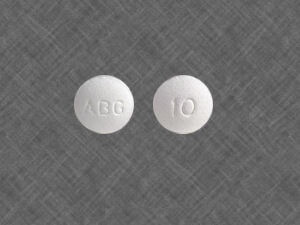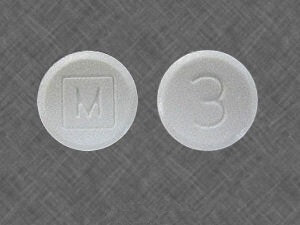OxyContin 10mg: What You Should Know About This Powerful Pain Medication
OxyContin 10mg is a prescription medication commonly used to treat moderate to severe chronic pain. As an extended-release opioid analgesic, OxyContin is designed to manage ongoing pain that cannot be controlled by non-opioid pain relievers or immediate-release opioids. It’s often prescribed for conditions such as cancer-related pain, severe arthritis, or post-surgical pain in patients requiring continuous, long-term relief.

What Is OxyContin?
OxyContin is the brand name for a time-released form of oxycodone hydrochloride, a powerful opioid medication. Unlike short-acting painkillers, which need to be taken every 4 to 6 hours, OxyContin tablets provide controlled pain relief over a 12-hour period. The 10mg dose is typically one of the lower strengths and is often used as a starting dose for opioid-tolerant individuals or those transitioning from other pain management regimens.
How Does OxyContin 10mg Work?
Oxycodone, the active ingredient in OxyContin, binds to opioid receptors in the brain and spinal cord, altering the perception of pain and emotional response to it. The extended-release formula gradually releases the medication into the bloodstream, offering consistent relief without the need for frequent dosing.
This makes OxyContin 10mg a suitable option for patients needing steady, long-term pain control. It is not intended for as-needed pain relief or for short-term use, and should only be used under close medical supervision.
Medical Uses and Benefits
OxyContin is commonly prescribed for:
-
Chronic back pain
-
Cancer pain
-
Post-surgical pain requiring extended management
-
Arthritis and joint degeneration
-
Neuropathic pain in cases where other treatments have failed
The major benefit of OxyContin 10mg is its ability to deliver consistent pain relief over extended periods, reducing the number of doses needed each day and improving patients’ quality of life.
Risks and Side Effects
While effective, OxyContin carries significant risks due to its classification as a Schedule II controlled substance. It has a high potential for misuse, dependence, and addiction, even when taken as prescribed.
Common side effects include:
-
Drowsiness or sedation
-
Constipation
-
Nausea or vomiting
-
Dizziness or lightheadedness
-
Dry mouth
More serious, but less common side effects may include:
-
Respiratory depression (slow or difficult breathing)
-
Low blood pressure
-
Confusion or hallucinations
-
Seizures
If any of these symptoms occur, especially difficulty breathing or severe drowsiness, seek emergency medical attention immediately.
Warnings and Precautions
OxyContin should only be taken by individuals who are opioid-tolerant or under strict guidance from a healthcare provider. Crushing, chewing, or breaking the tablets can result in a dangerous and potentially fatal overdose.
It’s important to avoid alcohol while taking OxyContin, as combining the two can severely depress the central nervous system. Additionally, other medications—especially benzodiazepines or sleep aids—can interact with oxycodone and increase the risk of life-threatening side effects.
This medication should not be used in patients with severe asthma, breathing problems, or gastrointestinal blockages. Pregnant individuals should use caution, as opioids can lead to neonatal withdrawal syndrome in newborns.
Addiction and Dependence
Due to its opioid nature, OxyContin 10mg may lead to both physical dependence and psychological addiction, especially with long-term use. It is critical to follow the prescribed dosage and not exceed it. Stopping OxyContin suddenly can cause withdrawal symptoms, so tapering under medical supervision is often required.
Safe Storage and Disposal
OxyContin should be stored in a secure location away from children, pets, or others who may misuse it. Leftover or unused tablets should be disposed of properly—ideally through a drug take-back program or by following FDA disposal guidelines.
Final Thoughts
OxyContin 10mg plays an important role in modern pain management, particularly for patients with long-term pain that doesn’t respond to over-the-counter medications or short-acting opioids. When used responsibly and under a doctor’s supervision, it can significantly improve comfort and mobility.
However, it is vital to understand the risks associated with opioid use, including the potential for addiction and overdose. Open communication with your healthcare provider, strict adherence to dosing guidelines, and regular monitoring can help ensure the safe use of OxyContin for chronic pain relief.
Frequently Asked Questions (FAQs) about OxyContin 10mg
1. What is OxyContin 10mg used for?
OxyContin 10mg is a prescription opioid medication used to manage severe, ongoing pain that requires around-the-clock treatment. It is not meant for short-term pain or on an as-needed basis.
2. How does OxyContin 10mg work?
OxyContin contains oxycodone, an opioid pain reliever. It works by changing how your brain and nervous system respond to pain. The extended-release formulation provides pain relief over a 12-hour period.
3. How should I take OxyContin 10mg?
-
Take it exactly as prescribed by your doctor.
-
Swallow whole—do not crush, chew, or dissolve the tablet.
-
Taking it improperly can lead to overdose or death, especially in someone who is not opioid-tolerant.
4. Can OxyContin 10mg be addictive?
Yes. OxyContin has a high potential for abuse, addiction, and misuse, even at regular doses. Use only as directed and never share it with others.
5. What are the common side effects?
Some common side effects include:
-
Drowsiness
-
Constipation
-
Nausea
-
Dizziness
-
Dry mouth
Seek immediate medical attention if you experience trouble breathing, confusion, or fainting.
6. Who should not take OxyContin 10mg?
Avoid OxyContin if you:
-
Have severe asthma or breathing problems
-
Have a paralytic ileus (a type of bowel blockage)
-
Are allergic to oxycodone or other opioids
-
Are not opioid-tolerant or require only short-term pain relief
7. Can I drink alcohol while taking OxyContin?
No. Drinking alcohol while on OxyContin can cause serious side effects or death. Avoid all alcohol and products that contain alcohol.
8. Is OxyContin 10mg the same as oxycodone?
OxyContin is a brand name for extended-release oxycodone. Regular oxycodone may come in immediate-release form and is taken more frequently.
9. What should I do if I miss a dose?
Take it as soon as you remember unless it’s almost time for your next dose. Do not double up or take extra to make up for a missed dose.
10. How should I store OxyContin 10mg?
-
Store in a secure place away from children or pets
-
Keep at room temperature, away from moisture and heat
-
Safely dispose of unused medication through a take-back program or by following FDA disposal guidelines









Reviews
There are no reviews yet.